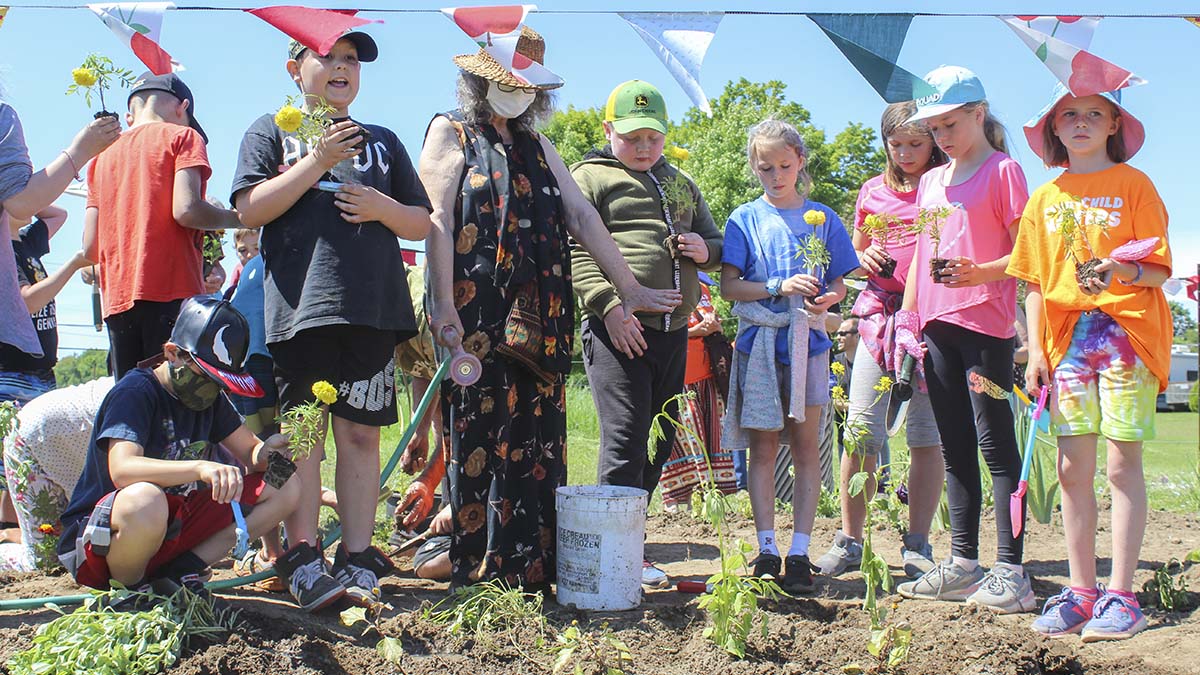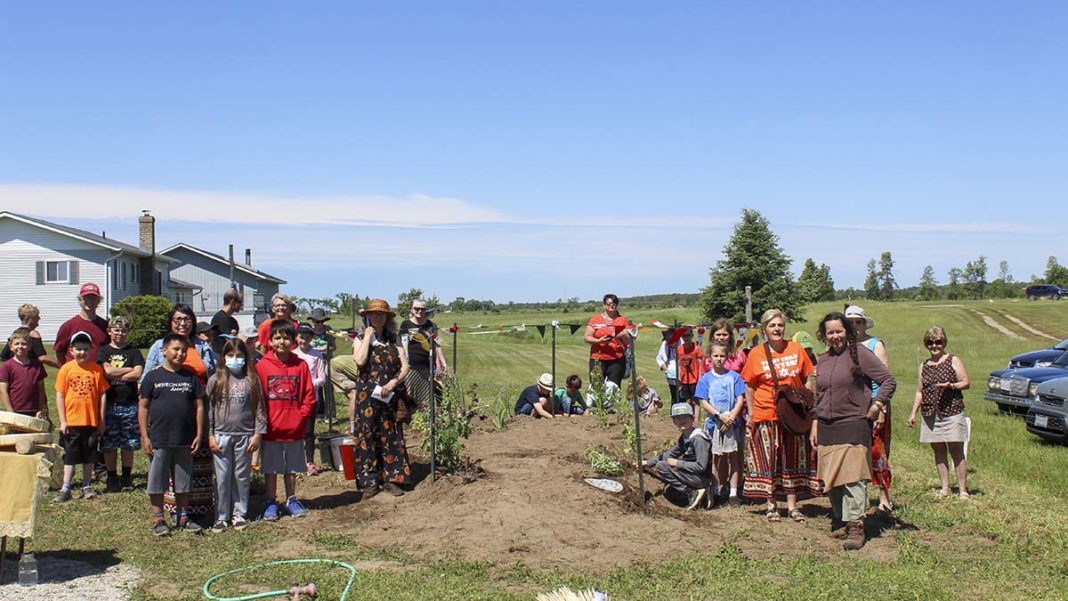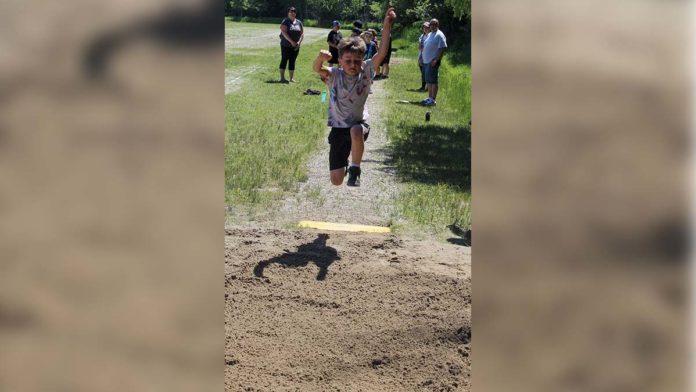GORDON—Young students from Charles C. McLean Public School (Gore Bay) and St. Joseph’s School (Sheshegwaning First Nation) helped plant the seeds of reconciliation and hope on June 14 as they joined members of the Western Manitoulin Community Garden (WMCG) (in collaboration with Kids Can Grow), in a ceremony to plant flowers and create a heart garden in memory of all those children who were affected by the residential school system.
“I would like to welcome everyone here today,” stated Sarah Earley of WMCG. “I am happy to be here, and to have Verna (Hardwick) here to this opening of the heart garden along with some of students from St. Joseph’s School and students and teachers from C.C. McLean on this very special project.”
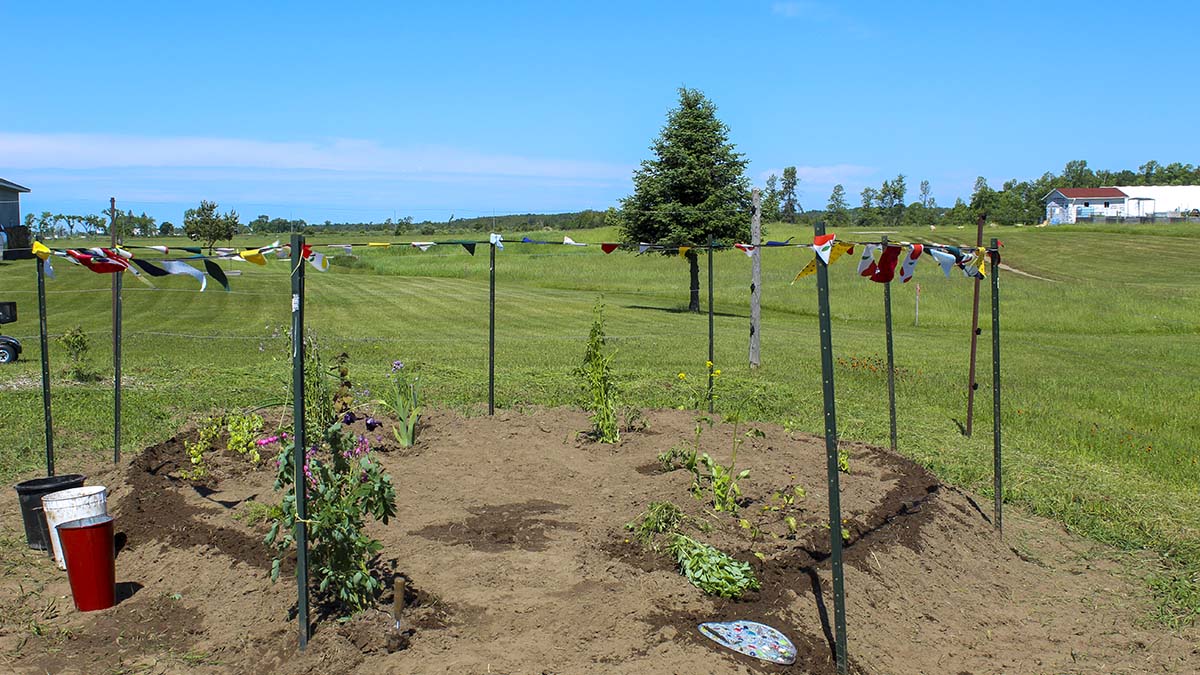
Ms. Earley explained, “a couple of months ago, I was talking to some Indigenous women and they were explaining about the truth and reconciliation project and one of the calls to action for reconciliation is creating a heart garden. This heart garden means so much to me, it was a vision I had but I also knew I needed help to do this. It is so exciting.”
“Today, our community garden is remembering the children who attended residential schools by creating this heart garden,” said Linda Willson of WMCG. “We are grateful for having this land to help build community, to help grow good food for people and to help people grow their own food. We wish to acknowledge that we are on the ancestral lands of the Three Fires Confederacy of Anishinaabe, the Odawa, the Potawatomi, and the Ojibwe people. We are all treaty people. Our treaty with the Anishinaabe is the Robinson Huron Treaty of 1850. The Anishinaabe are still working in the courts, asking Canada to honour this treaty.”
“In the spirit of reconciliation, we hope that there will be a fair answer for the Anishinaabe,” said Ms. Willson. “We hope you will come and visit this garden from time to time and remember the children who never returned from residential schools; think about the promises that were made in the treaty and find ways to make peace with our troubled past.”
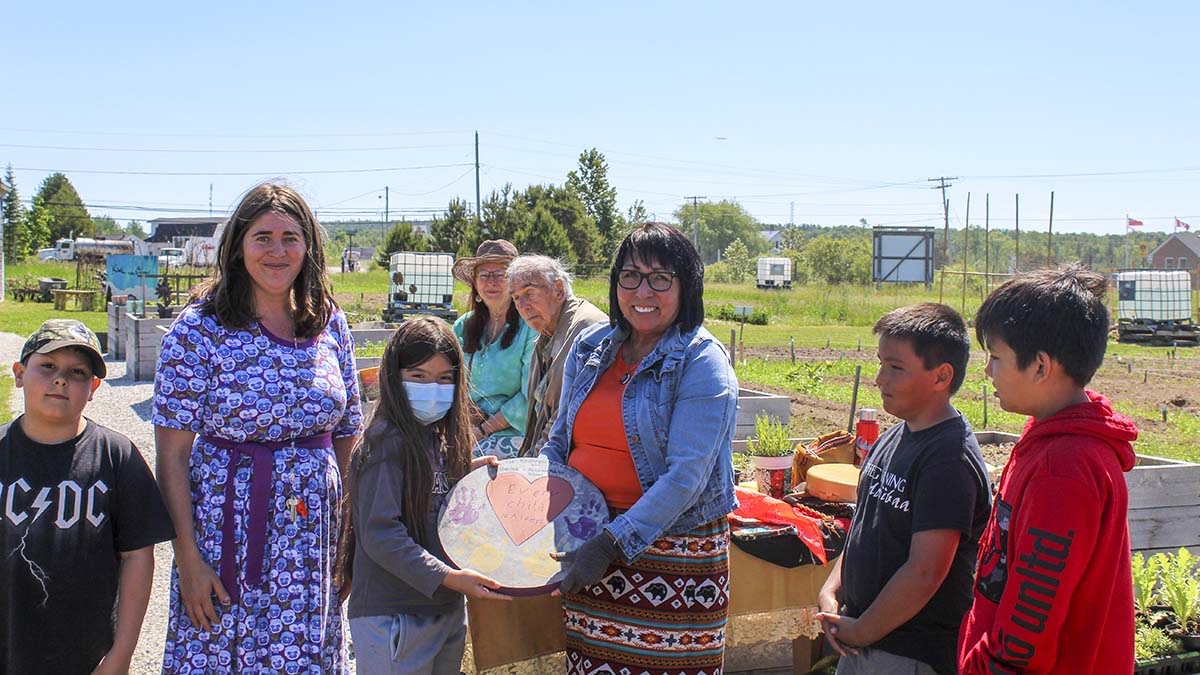
To begin the ceremony, Ms. Hardwick, an elder from Sheshegwaning, along with St. Joseph’s School Grade three student Yuma Cada, and Grade four students Landen Bell and Dustin Sampson, opened the project ceremony with a smudge.
“I did smudging for a good start and to provide energy,” said Ms. Hardwick. The group took part in performing a song, welcome the sun, and asking the Creator for a good day.
“In the prayer I read, I asked for the Creator to join us and to give thanks for all that we have been given. Without water, there is no life,” said Ms. Hardwick. “And I prayed in remembrance of all the babies and youngsters that were taken away from their families and homes and put into residential schools so far away they couldn’t travel back to see their families. A lot of these students got sick or suffered physical abuse, they were homesick and, when most arrived at these schools, they didn’t know how to speak English but were punished for not knowing the language. This is one of the things that were taken away from those young students who attended residential schools.”
“I went to an Indian Day School in Sheshegwaning and we were forbidden to use our own language. But the difference with what I went through, compared to what many, many others, is that I was able to go home after school,” said Ms. Hardwick.
“I also prayed to the Creator, giving thanks for everything that he gave us,” said Ms. Hardwick, “the plants, insects, birds, everything we have been provided on land and water. Without water, there would be nothing.”
Ms. Hardwick and the Sheshegwaning students performed a water song.
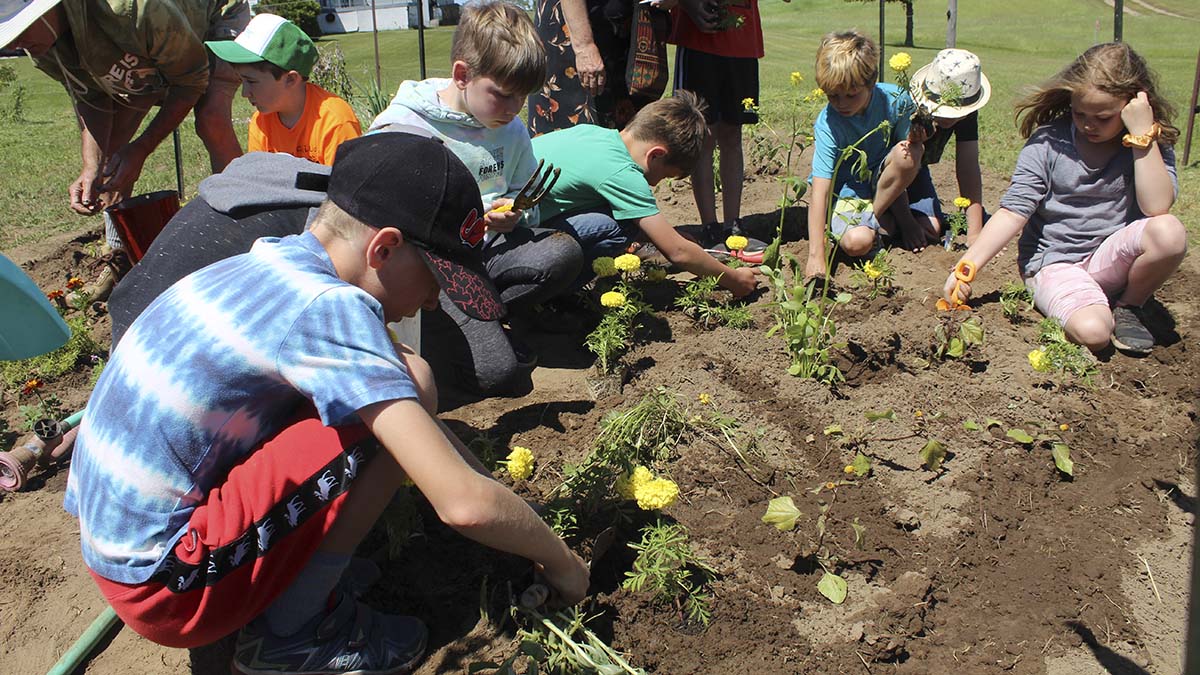
“This heart garden is a way to remember all the missing children who went to residential schools,” said Ms. Earley. “And to create a pathway and hope for the future. Each year, we will be able to replant the flowers we are going to put in the heart garden today.”
At the garden (created in shape of a heart) entrance, the Lyons Memorial United Church in Gore Bay provided a beautiful steppingstone. Ms. Willson said that garden was developed in four quadrants, representing the four chambers in the heart and the four elements that all living things depend on for survival. To the east, yellow flowers were planted which represent the fire and sun; to the south were red flowers representing the earth; to the west were blue flowers for the water; and the north, white flowers representing the air. Everyone on hand planted flowers or seeds, with some students having made their own hearts, and also paper and wooden hearts they painted that expressed words like ‘love’ ‘hope’ and ‘every child matters.’
“This heart garden will be a beautiful remembrance with the purpose of remembering all the children who went to residential schools,” continued Ms. Willson.
“We will be part of this every year,” said Megan Middleton, a grade three-four teacher at C.C.Mclean Public School. She and students presented a large heart to Ms. Hardwick.
The large painted heart read, “To Verna. Thanks so much for leading the ceremony today. We appreciate you and we look forward to seeing you again soon.”
“We will plant this in our garden in Sheshegwaning,” stated Ms. Hardwick.
